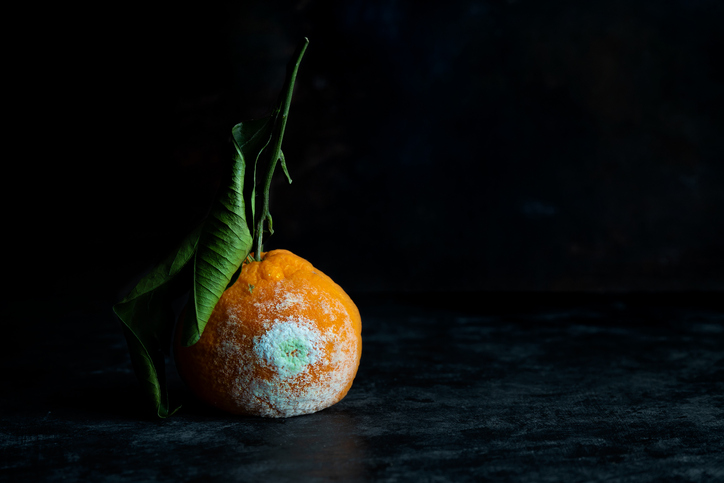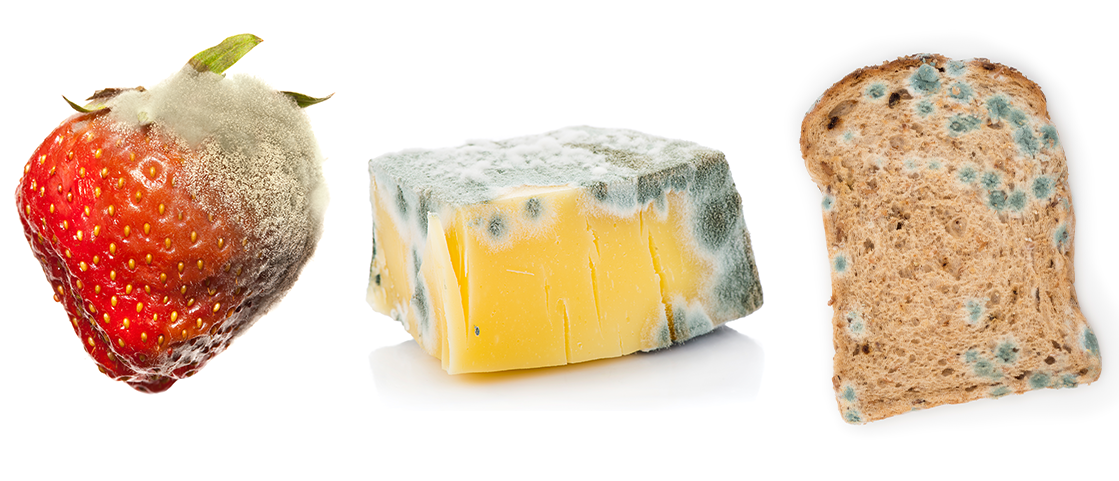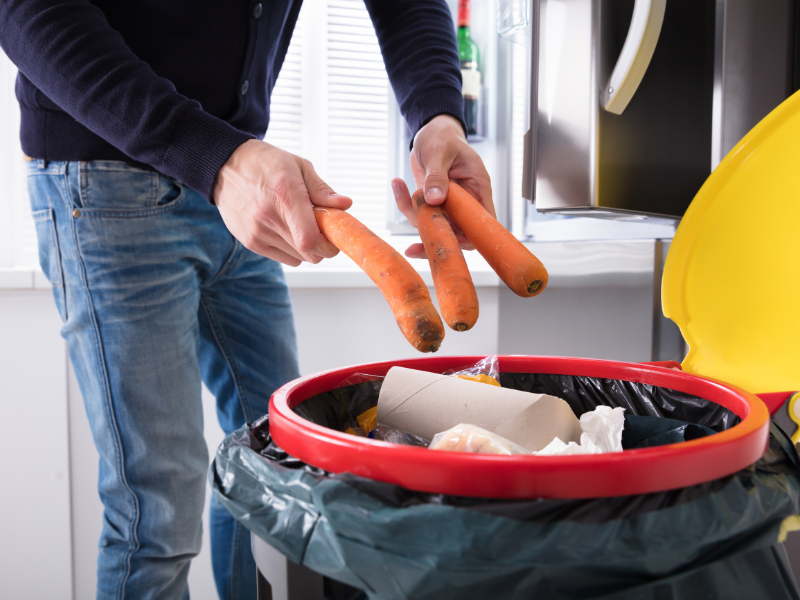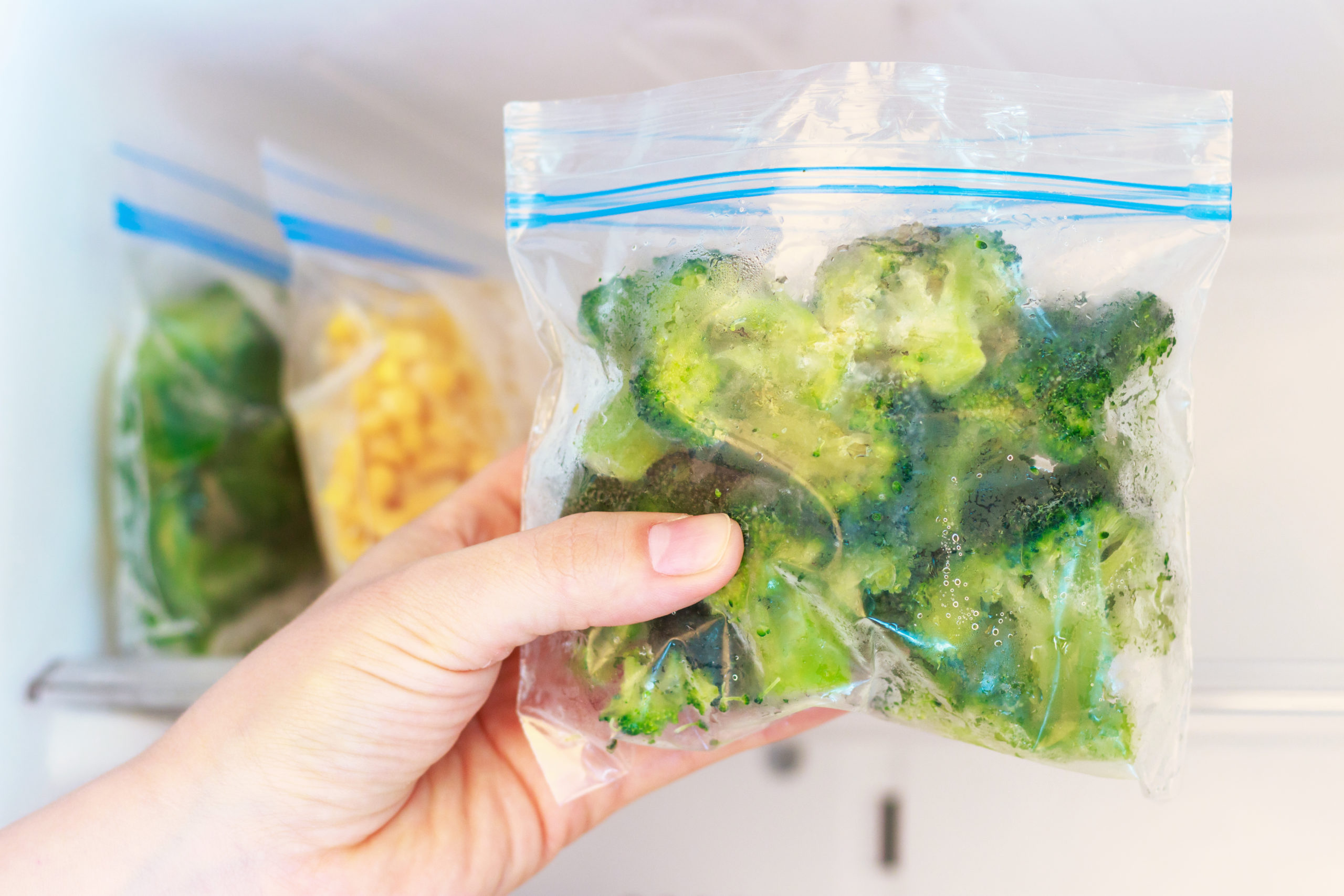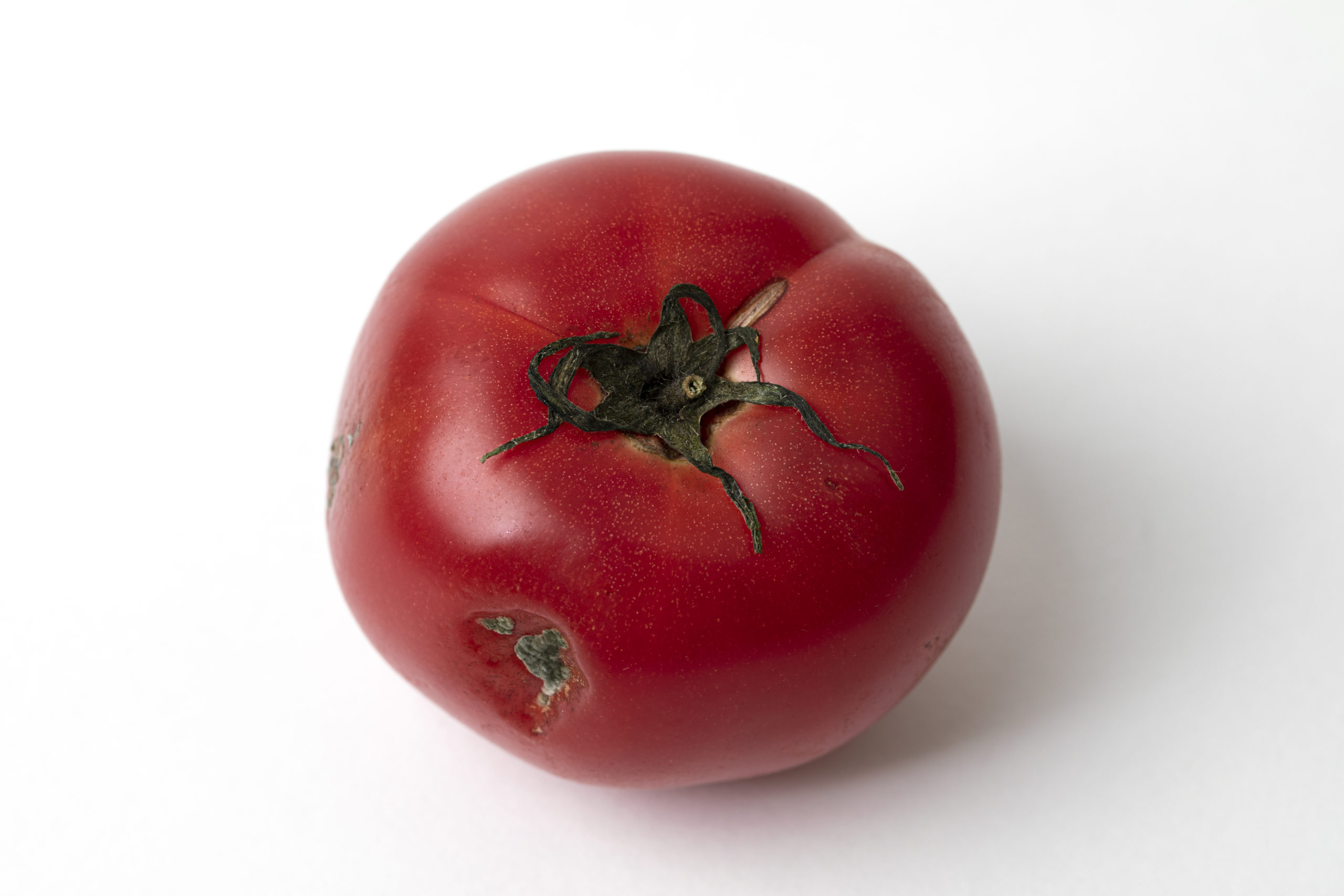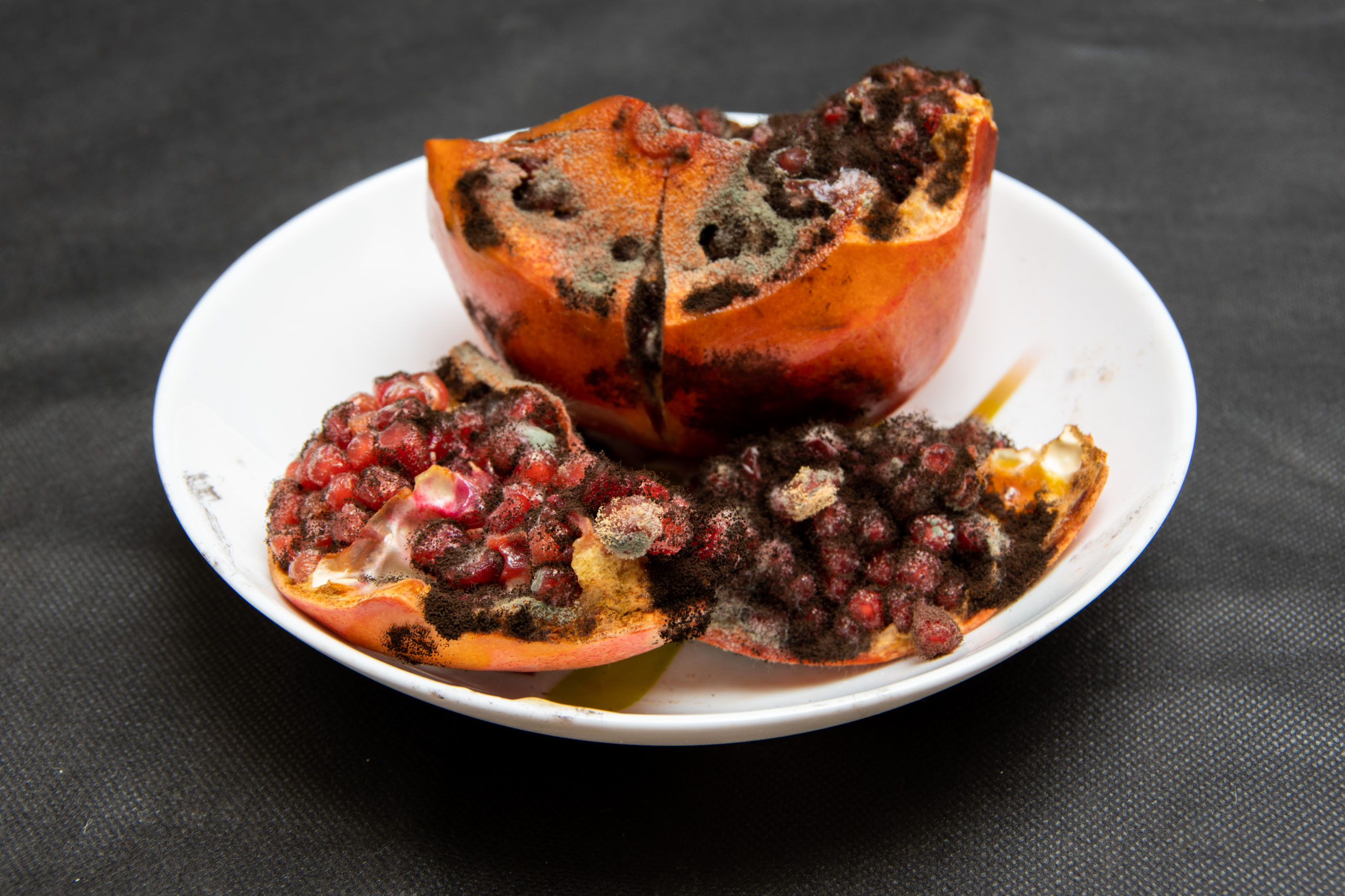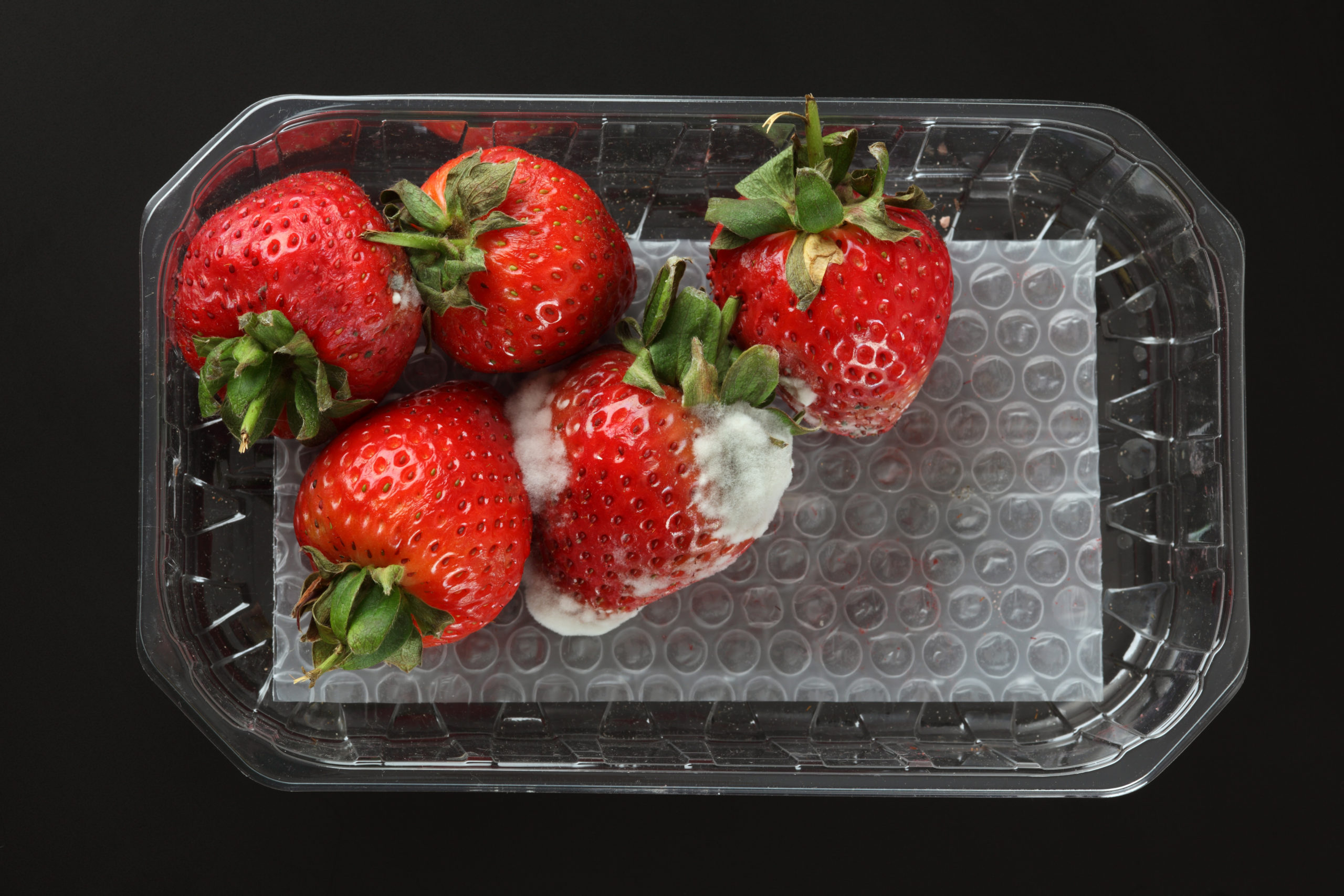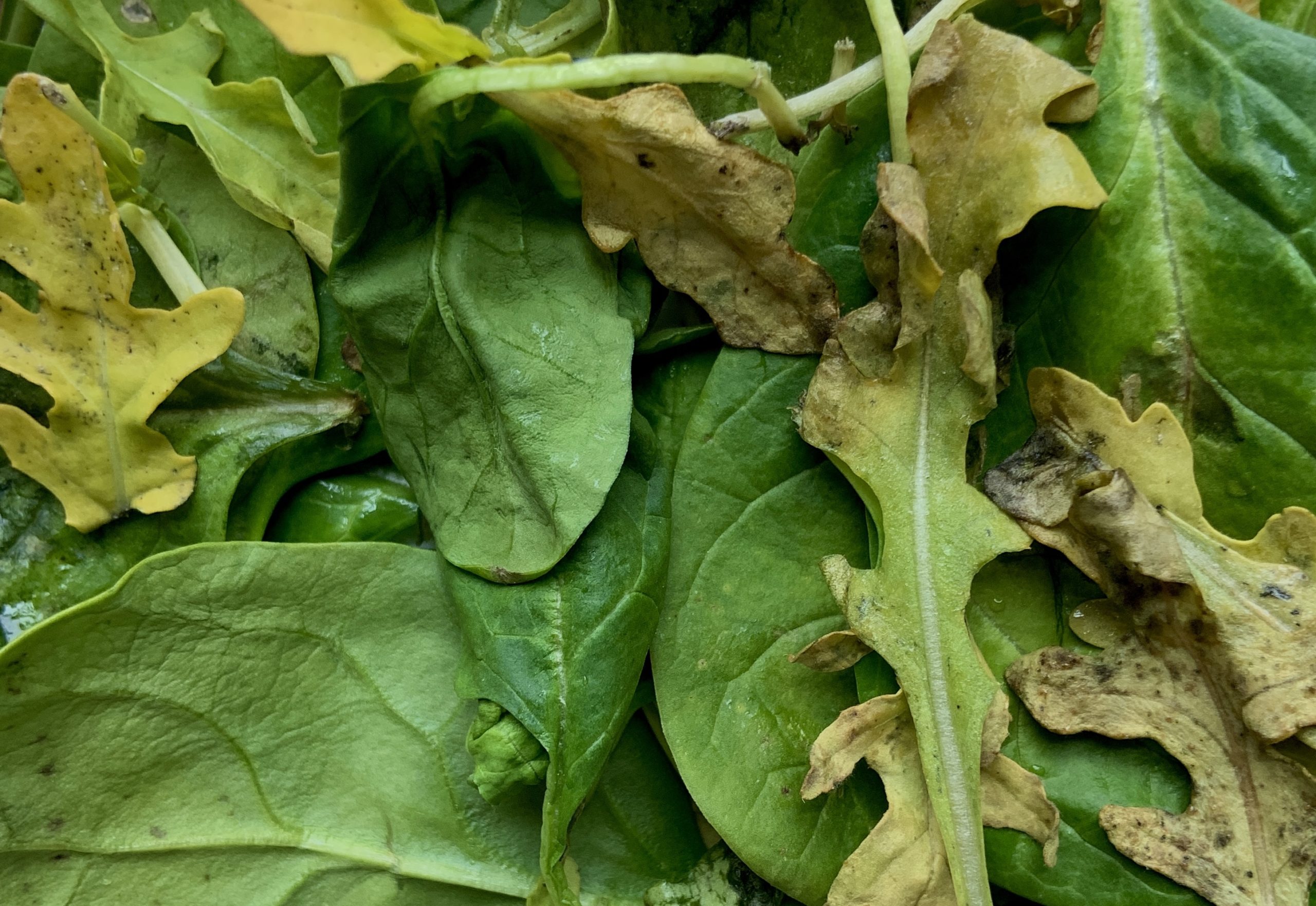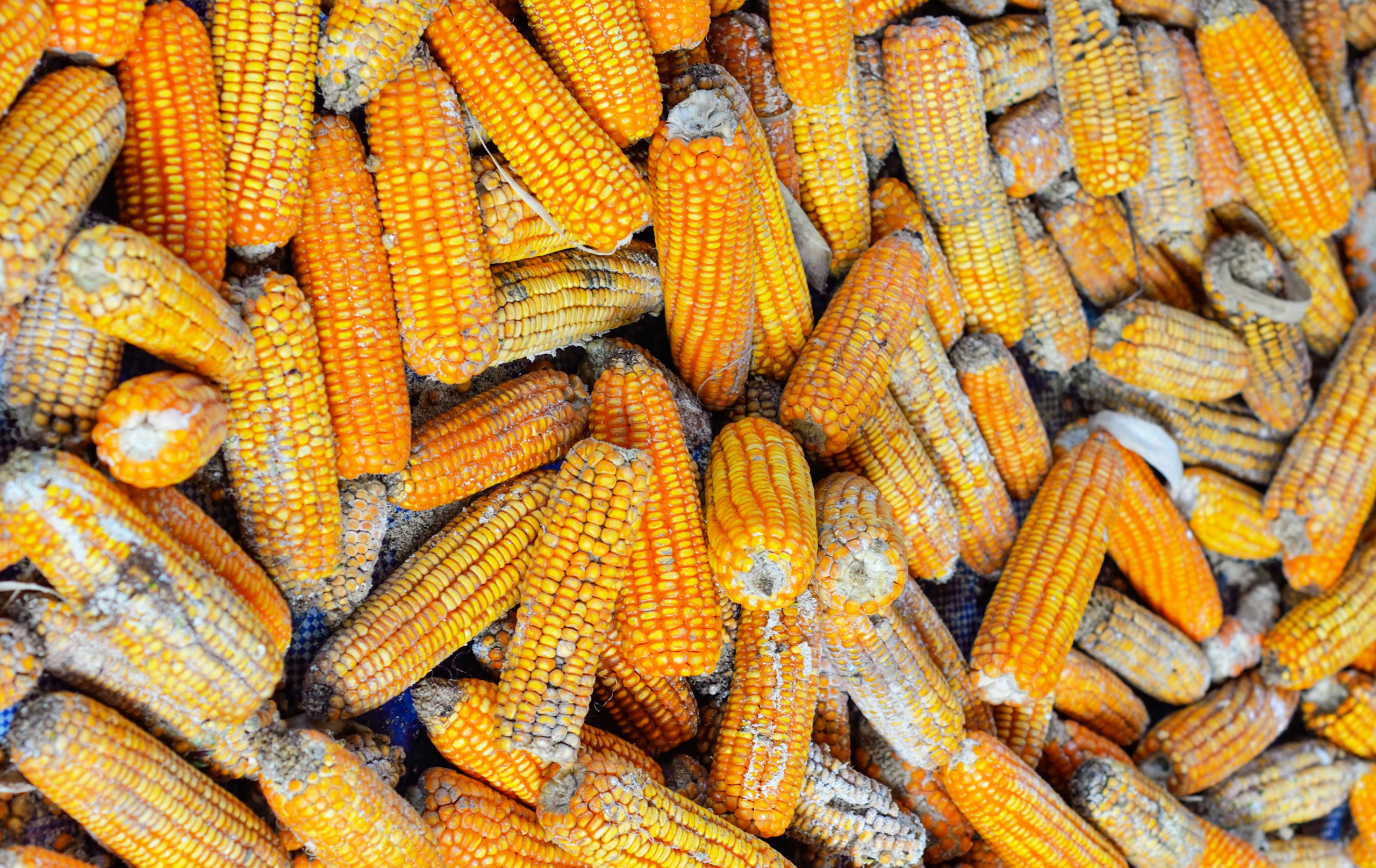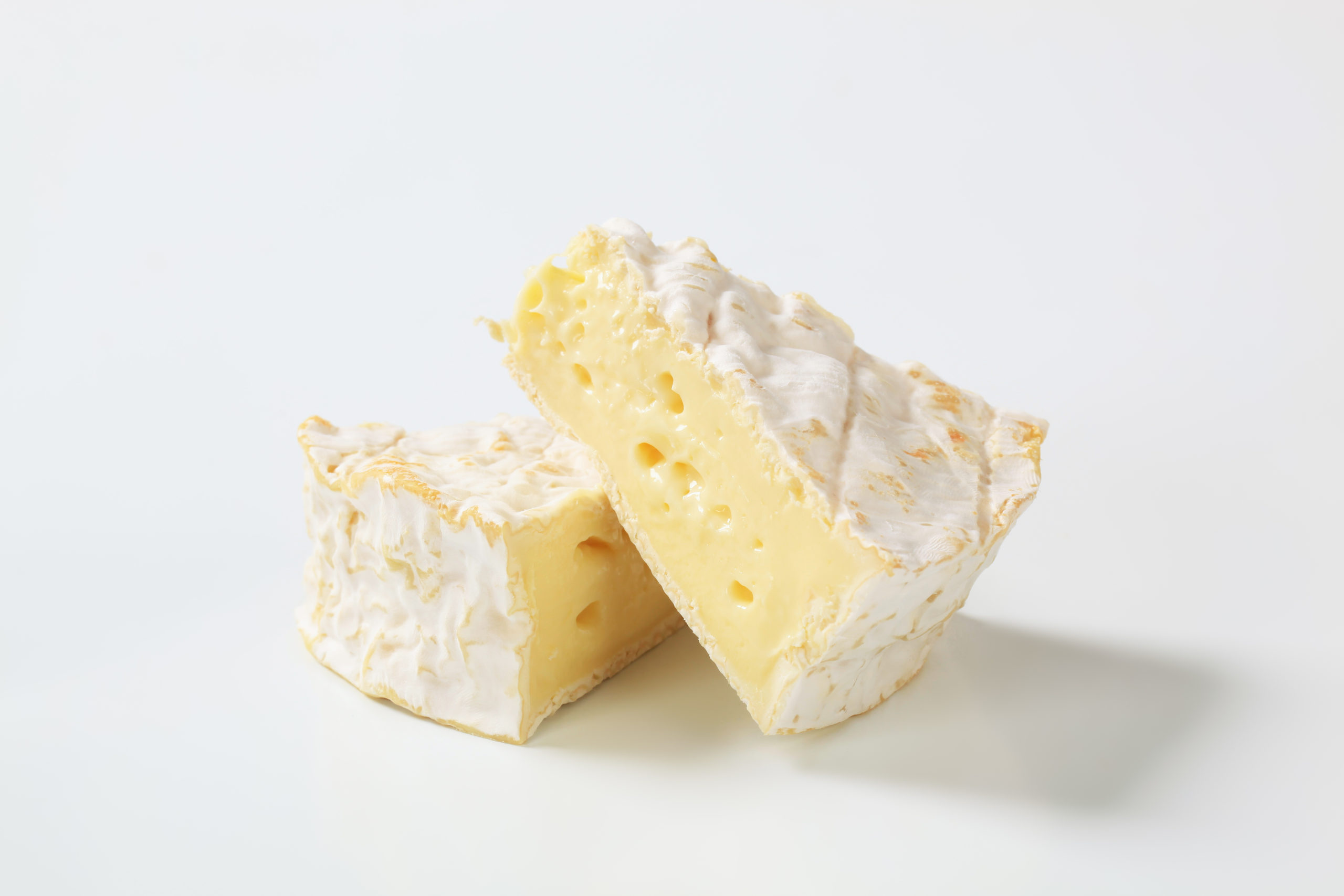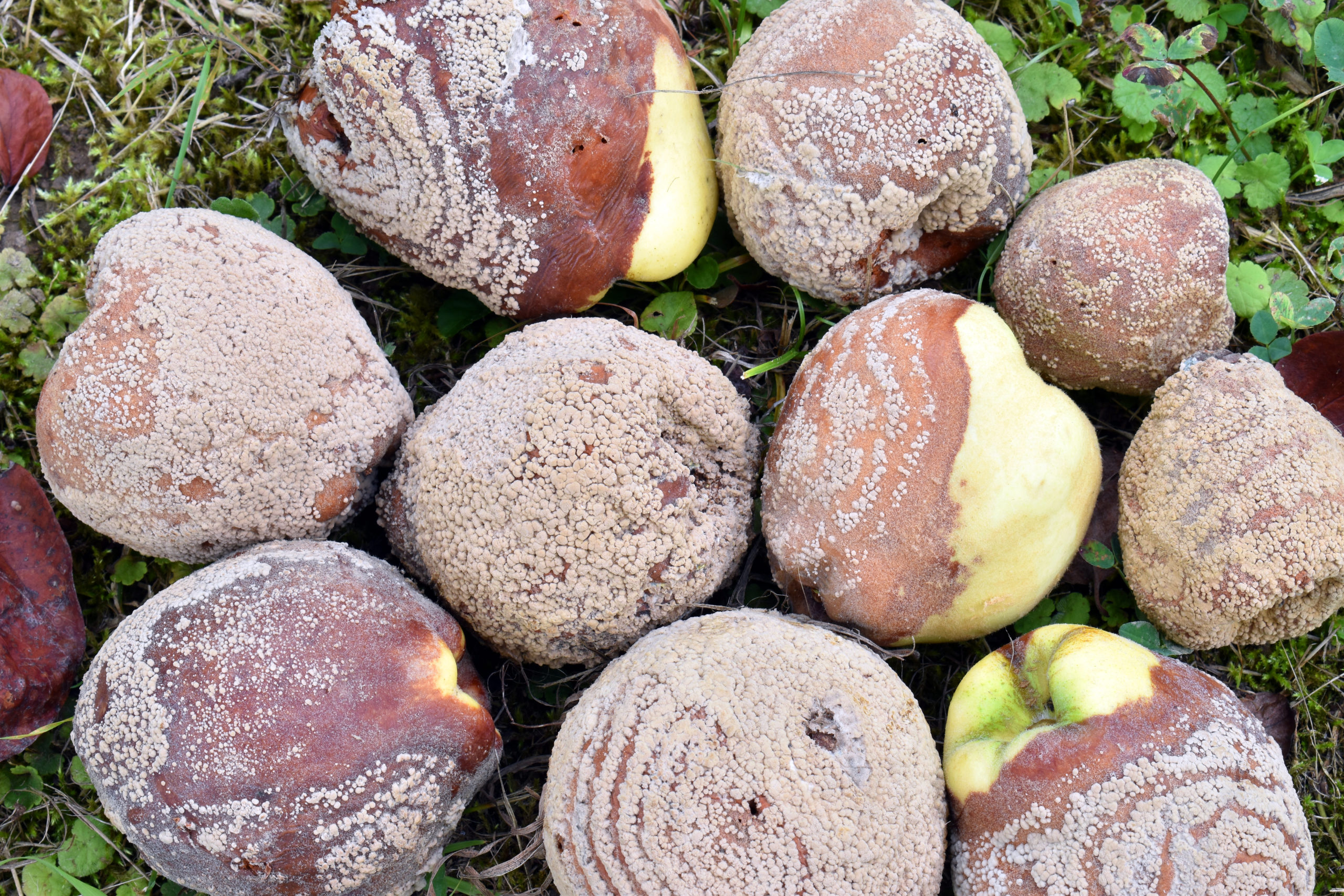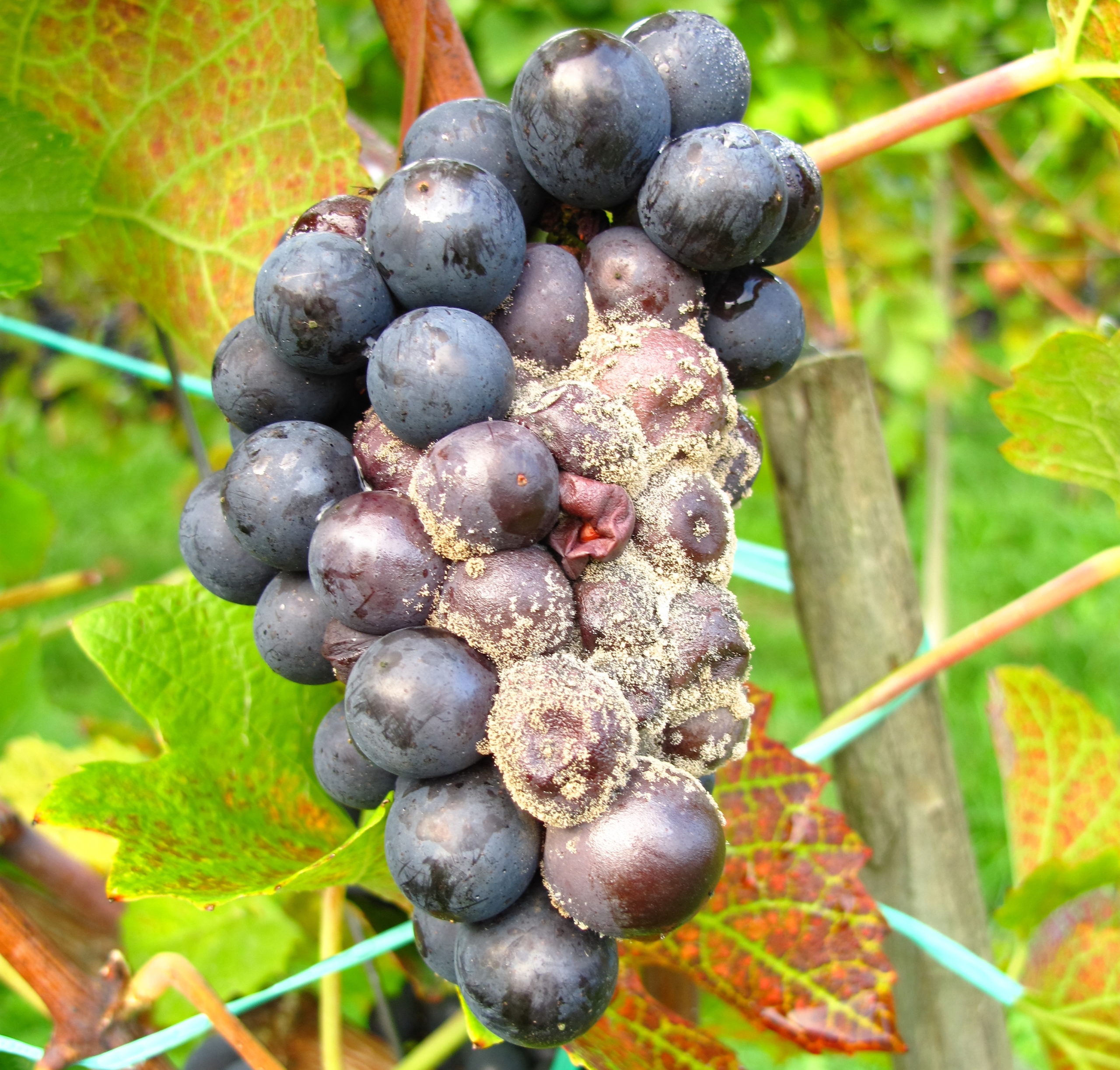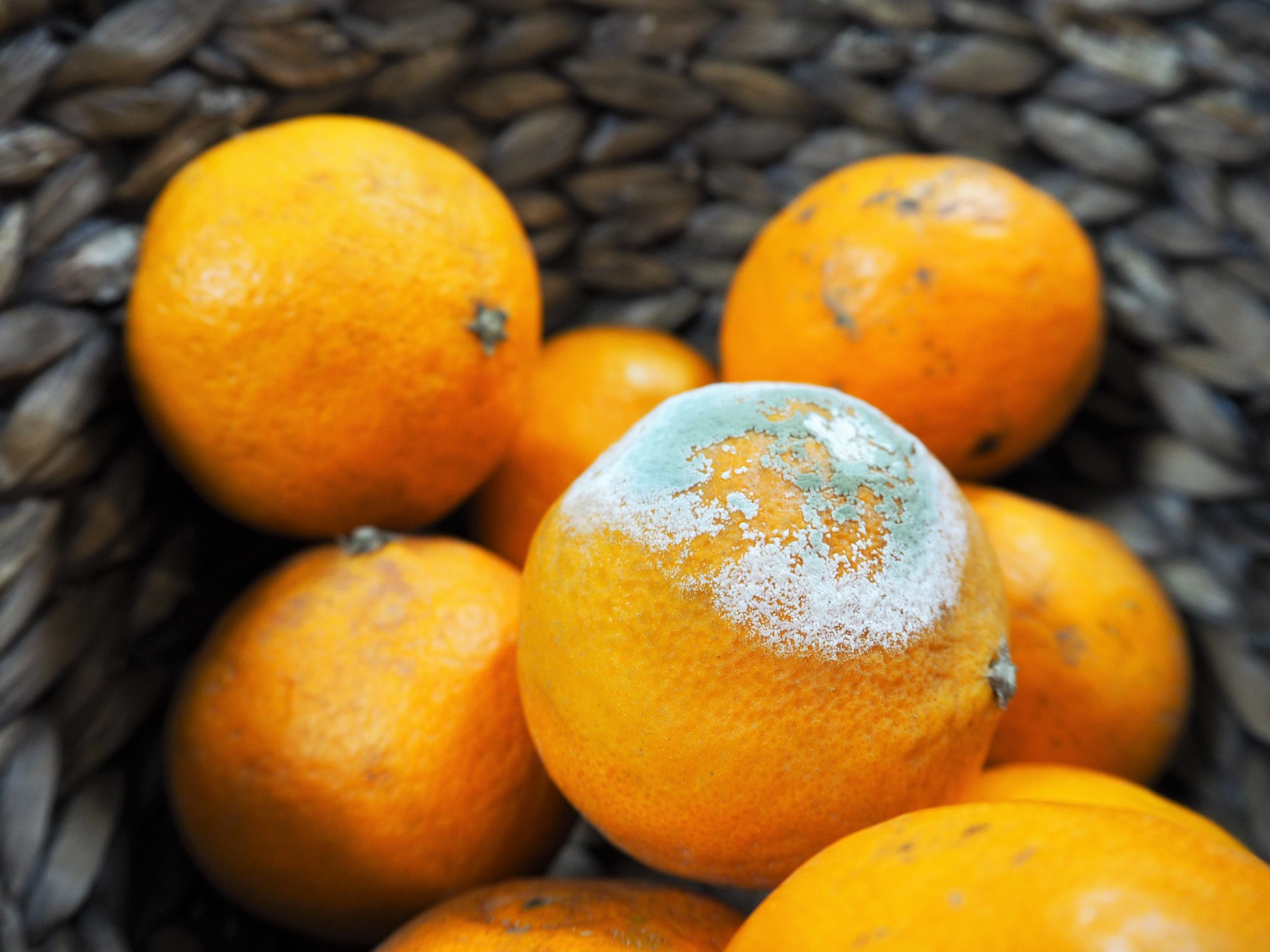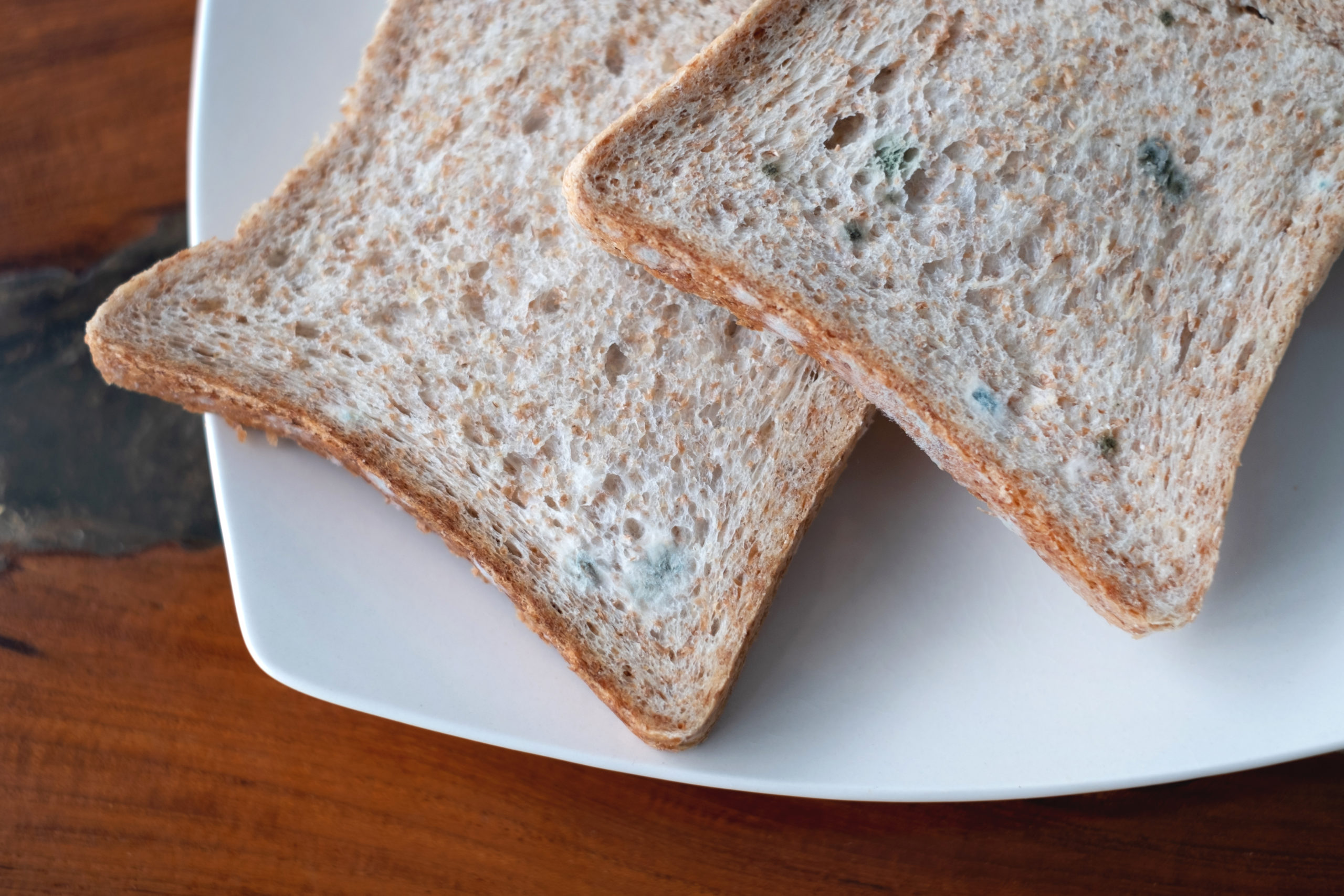How Bad Is It to Eat Moldy Food?
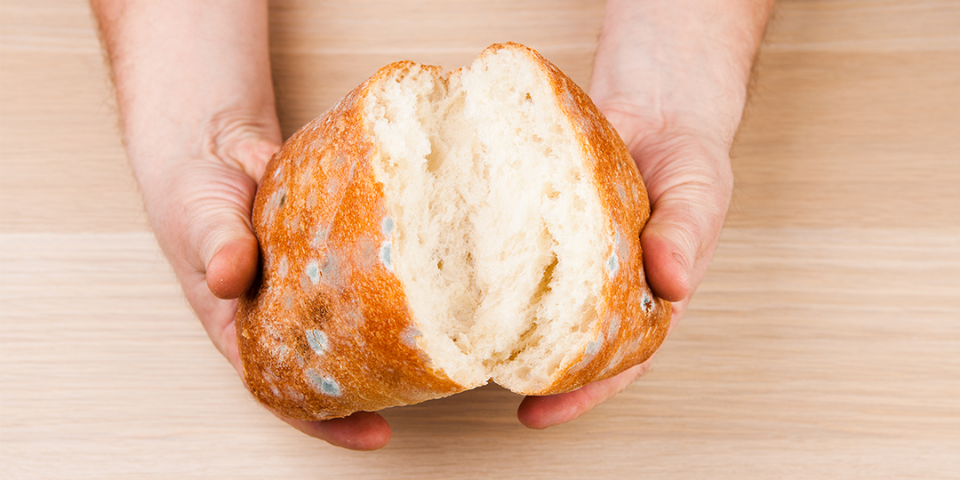
You’ve probably come across some moldy food that looks salvageable: that piece of bread with a spot of mold, or that pepper with mossy seeds. And what about moldy cheese? Is that safe to eat?
Let’s break it down.
What Is Mold and What Causes It?
Molds are fungi that live on plants and animals, and they reproduce by forming mold spores that are carried by air, water, and insects. When food goes bad, it’s often because of mold, which can make food look, smell, and feel “off.”
Though gross, mold is Mother Nature’s way of recycling food waste by breaking down organic matter and returning it to the environment.
If you see patches of fuzzy green, white, gray, or black growing on your food, that’s likely the mold forming thread-like structures big enough to see with the naked eye.
“When food isn’t stored properly or eaten in time, the mold can really thrive,” says Brittany Crump, MPH, RD at Savor Nutrition.
So be sure to inspect food before bringing it home. It may have been stored in temperatures that foster growth and may be moldy already.
Mold flourishes in warm, damp, and humid conditions. In fact, mold grows best at room temperature, but can be killed at temperatures as low as 140 degrees F.
Is It Safe to Eat Food With Mold on It?
How bad is it to eat moldy foods? That depends on the food.
“The most conservative choice is to throw food away if you see any mold on it,” advises Crump. “Keep in mind that this applies to when you see actual mold growth and doesn’t apply to simply stale or old food.”
In other words, that wrinkled bell pepper is still safe to eat.
What happens if you eat moldy foods?
Molds can certainly make you sick, and some molds are dangerous since they can cause allergic reactions and respiratory problems.
The mold itself can carry bacteria, further raising the food safety risk. Some molds can even produce toxins; the two most common are:
- Mycotoxins: a substance poisonous to humans and made by molds commonly found on grains, nuts, apples, and some juices
- Aflatoxins: a specific mycotoxin that can cause cancer and is found on corn and peanuts
Can you kill mold by cooking it?
Since molds die around 140-190 degrees F, you might wonder if you can simply cook off moldy tomatoes and veggies. It’s not recommended.
The mycotoxins produced by molds are heat-tolerant and can still stick around to make you sick.
What Foods Are Prone to Mold?
Molds can grow on most foods, especially if moisture is present. They love growing on foods with high water content, so foods prone to molding are:
- Fruits like peaches, grapes, strawberries, blueberries, lemons, oranges, apples, etc.
- Vegetables like tomatoes, carrots, bell peppers, corn, cucumbers, etc.
- Cheeses including soft cheeses like cottage cheese, cream cheese, ricotta, etc., and harder cheeses like cheddar, Parmesan, Swiss, Colby jack, etc.
- Bread from soft, pre-sliced varieties to dryer varieties like rye, baguettes, sourdough, etc.
- Meats kept way over the expiration date, such as deli meats, bacon, hotdogs, etc.
What Foods Should You Throw Away?
Depending on the moldy food, the USDA recommends either throwing it away or keeping it for consumption so long as you follow safe practices. Foods that the USDA recommends throwing out typically have high water content.
If you see mold, there are often bacteria growing along with it. For soft or porous foods like bread, mold can easily contaminate below the surface, making it difficult to rescue.
If you see mold on these foods, definitely throw them in the trash:
- Luncheon meats, bacon, hotdogs
- Leftover cooked meat or poultry
- Cooked casseroles, grains, pasta
- Discard soft cheeses such as Brie and Camembert if they contain molds that are not a part of the manufacturing process
- Soft cheeses
- Crumbled, shredded, or sliced cheeses
- Jams and jellies (mycotoxin could be present)
- Peanut butter, legumes, nuts
- Yogurt or sour cream
- Bread and baked goods
- Soft fruits and vegetables
Moldy foods you can still use
According to Crump, “Once you see mold on food, chances are good the mold has also contaminated below the surface, though not always.”
As long as you follow the safe handling guidelines, it’s still possible to consume these foods even if you see mold:
| Food | Handling Guidelines | Why |
| Hard salami or dry-cured hams | Scrub mold off the top of the food. | Food is shelf-stable, and surface mold is expected. |
| Hard cheeses and hard cheeses made with mold (Gorgonzola, Stilton) | Cut an inch around and below where you see mold, and be careful not to touch the knife into any moldy area, or you risk contamination. | Mold can’t contaminate deeply below the surface of hard cheeses. |
| Firm fruits and vegetables (cabbage, bell peppers, carrots) | Cut an inch around and below where you see mold, and be careful not to touch the knife into any moldy area, or you risk contamination. | Firm fruits and vegetables have lower water content, and it’s harder for the mold to contaminate deeply below the surface. |
To help you decide which foods to throw away or keep, follow these guidelines by the USDA.
How Should You Handle Moldy Foods?
After spotting a moldy food that you must throw away, follow these tips to safely dispose of the moldy offender:
- Don’t sniff the food since mold and spores can lead to respiratory issues.
- Cover the moldy food in plastic wrap or a paper bag and take it to the trash.
- Clean the area where the food was stored.
- Check foods nearby to see if they’ve also developed mold.
Can You Prevent Mold From Growing on Food?
To counteract mold, we turn to freezing, drying, canning, and pickling food. But, mold spores are everywhere — once your food is open and exposed, there’s no telling where they’ll land.
To prevent mold from growing, try to limit the food’s exposure to mold spores by following these tips:
- Covering leftovers with plastic wrap
- Emptying unused food from cans into lidded storage jars
- Refrigerating leftovers within 2 hours and eating leftovers within three to four days
By storing food properly and by buying reasonable quantities of food throughout the week, you can keep food mold under control and reduce food waste.
If you need more guidance, read these tips on how to plan, prep, and store meals for the week.
What Types of Mold Grow on Food?
Here are some of the most common types of food molds, according to the USDA:
1. Alternaria
A black mold found on overly ripe tomatoes that can cause soft, sunken spots.
2. Aspergillus
Also known as “fruit rot,” this mold grows from within the fruit.
3. Mucor
A fuzzy mold found on ripe or damaged berries; the cold doesn’t slow them, which is why you commonly still see them on refrigerated strawberries.
4. Cladosporium
A mold that causes leaf spots on leafy greens like spinach.
5. Fusarium
A mold that can grow on corn (both food and feed) and produce form of mycotoxin, which can cause or worsen respiratory problems.
6. Geotrichum
A common white mold found on ripened, soft cheese and other dairy products.
7. Monilia
A mold found in soft fruits and can also produce red bread molds.
8. Botrytis
A fuzzy, gray mold that grows on fruits and vegetables.
9. Penicillium
A mold found on many types of foods, including cereal, bread, garlic, cheese, nuts, and fruits; their presence can trigger allergic reactions in some people.
10. Rhizopus
A gray, fluffy mold often tinged with blue and yellow that can produce black spores; it’s common on old bread but can also grow on fruits.


